12 Jan 2015 : While doing regular timing of Vela during the UTMOST commissioning, PhD student Fabian Jankowski has detected a glitch in the pulsar’s slow down rate.
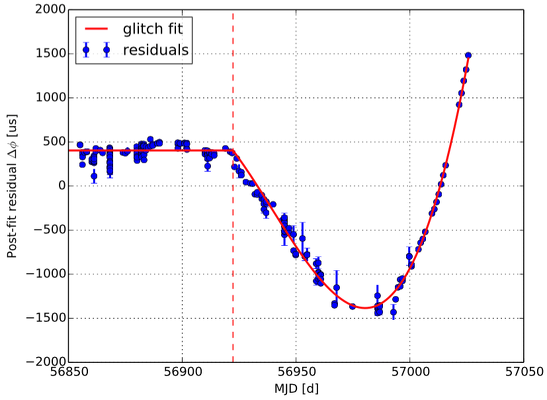
- Our ATEL telegram of the glitch is here.
12 Jan 2015 : While doing regular timing of Vela during the UTMOST commissioning, PhD student Fabian Jankowski has detected a glitch in the pulsar’s slow down rate.

Mapping has begun at UTMOST, not just for its own sake but as a means of verifying our correlator — and is an important milestone on the way to coherence of the astronomical signal across the array, and the search for FRBs.
Our first images are shown below, using only 88 modules, corresponding to about 1/4 of the telescope surface area. The rest of the telescope modules will be accessible after the GPU correlator is upgraded to its final capacity in mid-2015.
J2359-6054
Our first image taken with UTMOST, a 6 hr track of a radio galaxy J2359-6054. The phase calibrator J2341-5816 was observed for for 10 minutes for every 1 hour track of the galaxy. Natural weighting and uvrange of (0.1,5) kilolambda was used. This is the clean map and the RMS is ~3 mJy/beam. Credit: Shivani Bhandari.
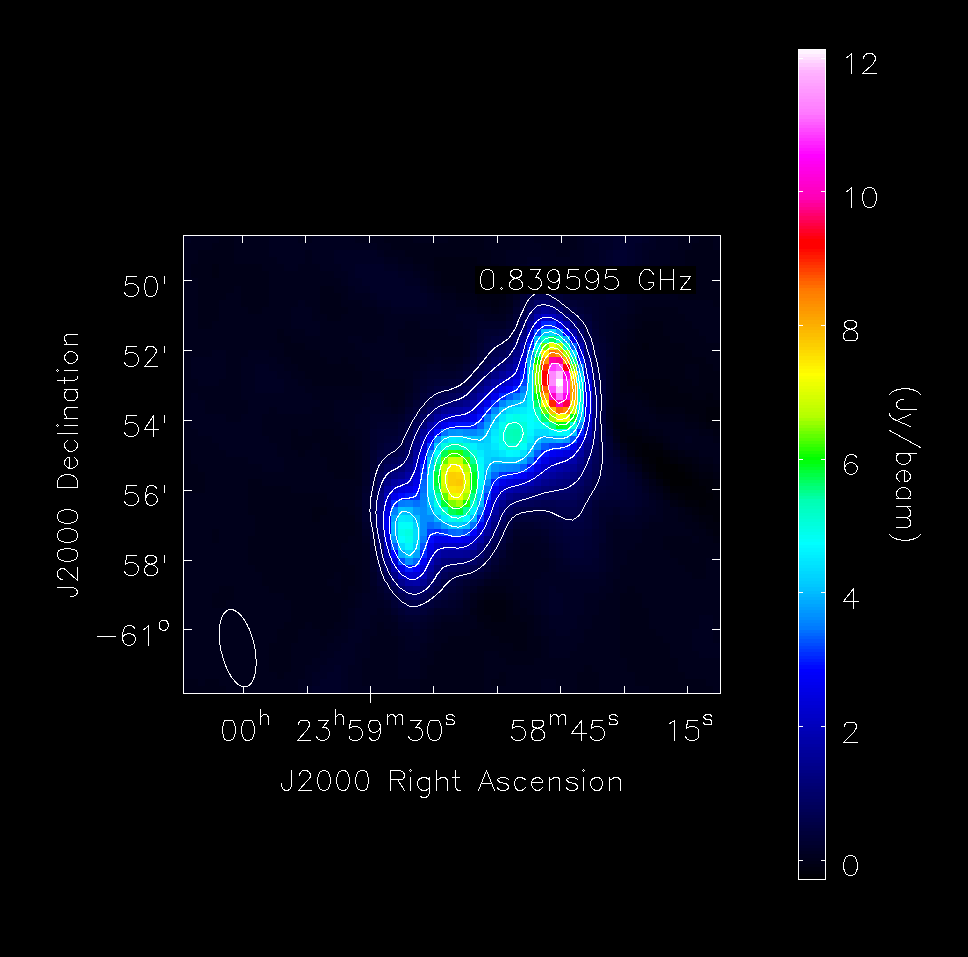
SN1987A
An image of the supernova remnant of SN1987A in the LMC, made from 6 hours of data, split by ~40 hours. A calibrator was observed every hour. Image noise ~ 22 mJy, and contour levels are at -110, 110, 220, 330 … mJy. This very early image is one of the first made with the new GPU-based correlator system, and utilises only a fraction of the final system sensitivity. Credit: Shivani Bhandari, Vikram Ravi, Chris Flynn.
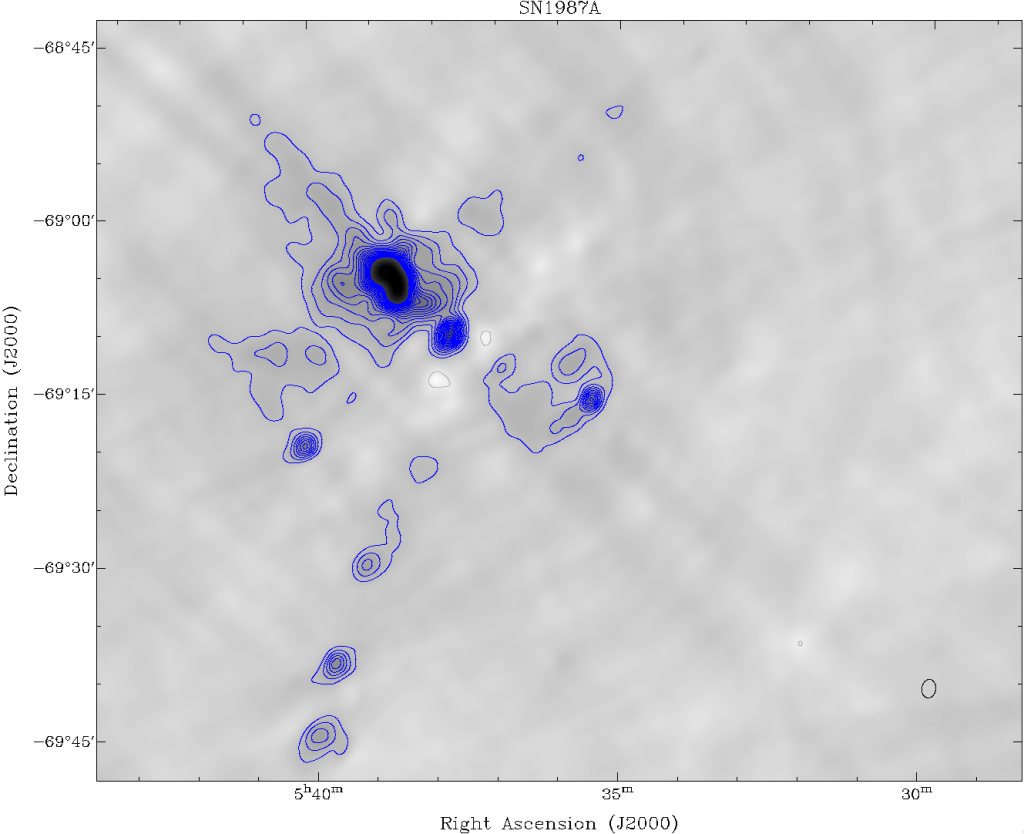
Fornax A
This is our best image to date in the mapping program. Nine hours were spent tracking the source. We observed a nearby phase calibrator every two hours. The image noise ~ 5 mJy, and contour levels are shown at levels of -25, 25, 50, 75 … mJy in the image. Only 1/4 of the array was used (the remaining 3/4 to become accessible with the installation of the second half of our GPU correlator). Credit: Vikram Ravi, Chris Flynn, Matthew Bailes.
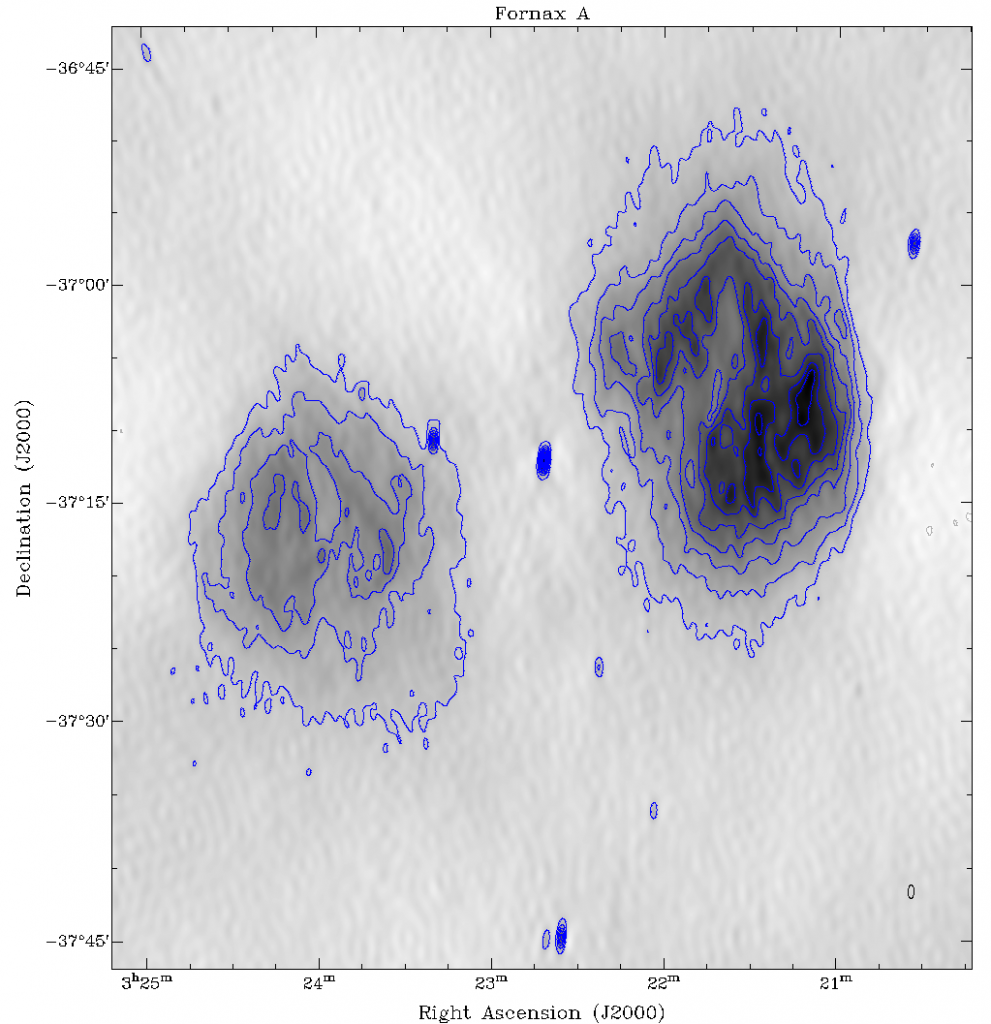
Link : It’s ‘game on’ for UTMOST
This CAASTRO press release highlights progress at Molonglo and how the hardware used in video gaming has transformed an old telescope into a powerful new one.
One of the most famous supernovae in history is SN1987A – the first naked eye supernova to explode since the invention of the telescope.
The upgrade to MOST has progressed sufficiently that we are able to begin mapping again, using the UTMOST correlator.
A 9 hour track of the supernova remnant field in the Large Magellanic Cloud, despite the low sensitivity of the telescope at an early stage in the upgrade, has allowed us to resume measuring the flux of the remnant, after a break of almost 4 years.
Long-term monitoring of the source was a regular feature of operations at Molonglo since the remnant was first detected in 1990 (Ball et al 1995).
The preliminary result is shown above, with the new data point added top right. There are indications that the flux density has turned over relative to the former rate of increase, consistent with the remnant’s behaviour at other frequencies (e.g. Staveley-Smith et al. 2014). The measurements were made by Duncan Campbell-Wilson at Molonglo.
These preliminary results with the system while still commissioning auger well for the future. Monitoring, and flux calibration, will continue over the coming months as the system approaches its final sensitivity.
UTMOST has a field of view of about 2 (NS) by 4 degrees (EW), which we will tile with multiple “fanbeams” — each fanbeam in the final configuration will be about 45 arsec EW and 2 degrees NS, and will be used to search for FRBs and to time pulsars.
Today we have successfully seen the Vela pulsar transiting through 5 of these fanbeams, laid out EW on the sky near the transit point on the meridian, and seen the pulsar moving through each fanbeam in turn as the Earth rotates. The observations were made from baseband data and post-processed.
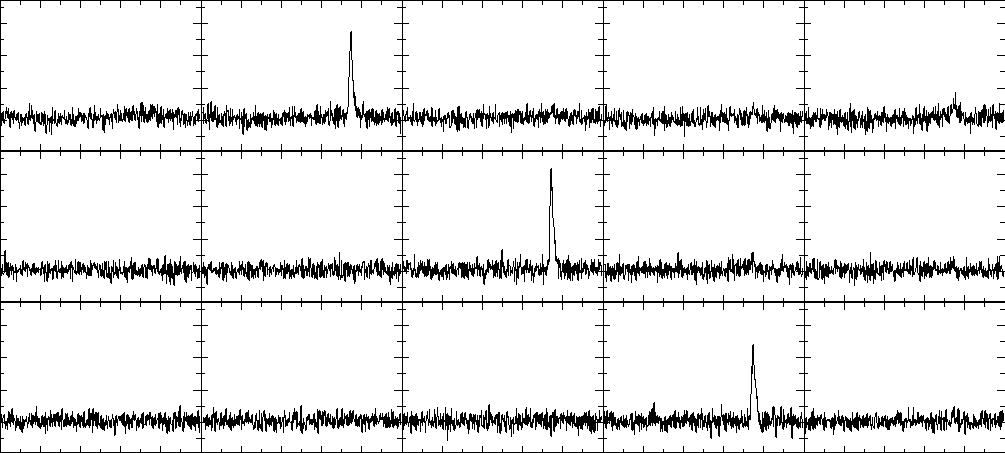
This is an important milestone on the way to being able to achieve this in real time for many hundreds of fanbeams across the primary beam of the telescope.
Video of the pulsar passing through the fanbeams (10 MB) : MolongloTiledBeam.mov
All our tied array beam observations to date have been by taking short amounts of baseband data and post-processing. This limited us to spending at most a few minutes on a pulsar, since the data rates at UTMOST are so high we can only save raw data for this long.
Today (Oct 15, 2014) we got the live beam former and pulsar folding working in real time, obtaining a pulse profile for PSR 0437-4715 and for Vela. The real-time system allows us to follow pulsars for tens of minutes to hours, reduce the rate at which data needs to be stored, and improving our timing measurements significantly.
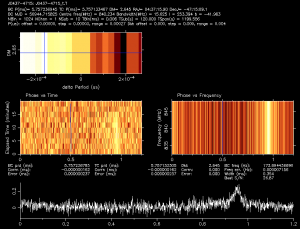
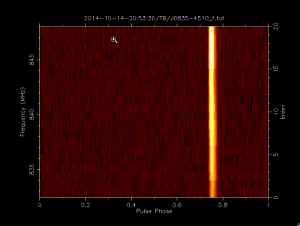
We have used baseband data to feed our single pulse engine (developed by Andrew Jameson) with our tied array beam – and behold UTMOST has detected its first single pulses from the heavens from Vela. We detected almost 8000 single pulses the best of which are shown above – note also the scattering in the profiles as the radio waves leave the supernova remnant.
An important aspect of Molonglo’s operations in the last decade is the increasing use of mobile phones.
The image above shows a phone call (nearly vertically slanted lines the lower right hand panels) occurring in our operating band.
Phone calls can be recognised as they distort the signal in the telescope receivers — and can be removed by a measuring in real time whether even quite weak distortion is present. This challenge has been met at UTMOST, where we are taking data at a very high rate — 22 GB/sec in the final design. Our GPU processors (otherwise known as games console graphics cards) have sufficient power to process the astronomical data but also monitor live for the presence of phone calls — which can then be masked out or excised from the data.
After taking out phone call activity, a quasar can be easily seen despite the fact it is far fainter than the phone call (seen as the spike in the right hand panels in the top figure).
Well done to Andrew Jameson at UTMOST for this significant achievement.